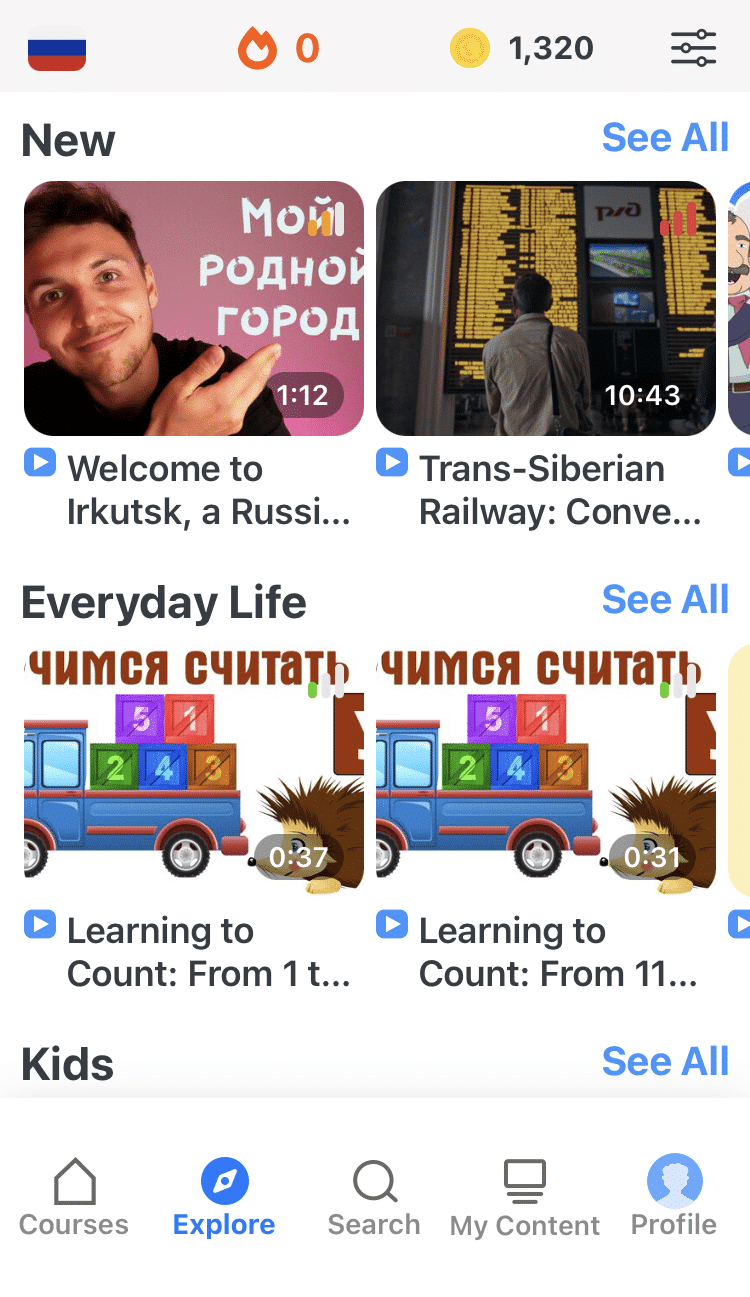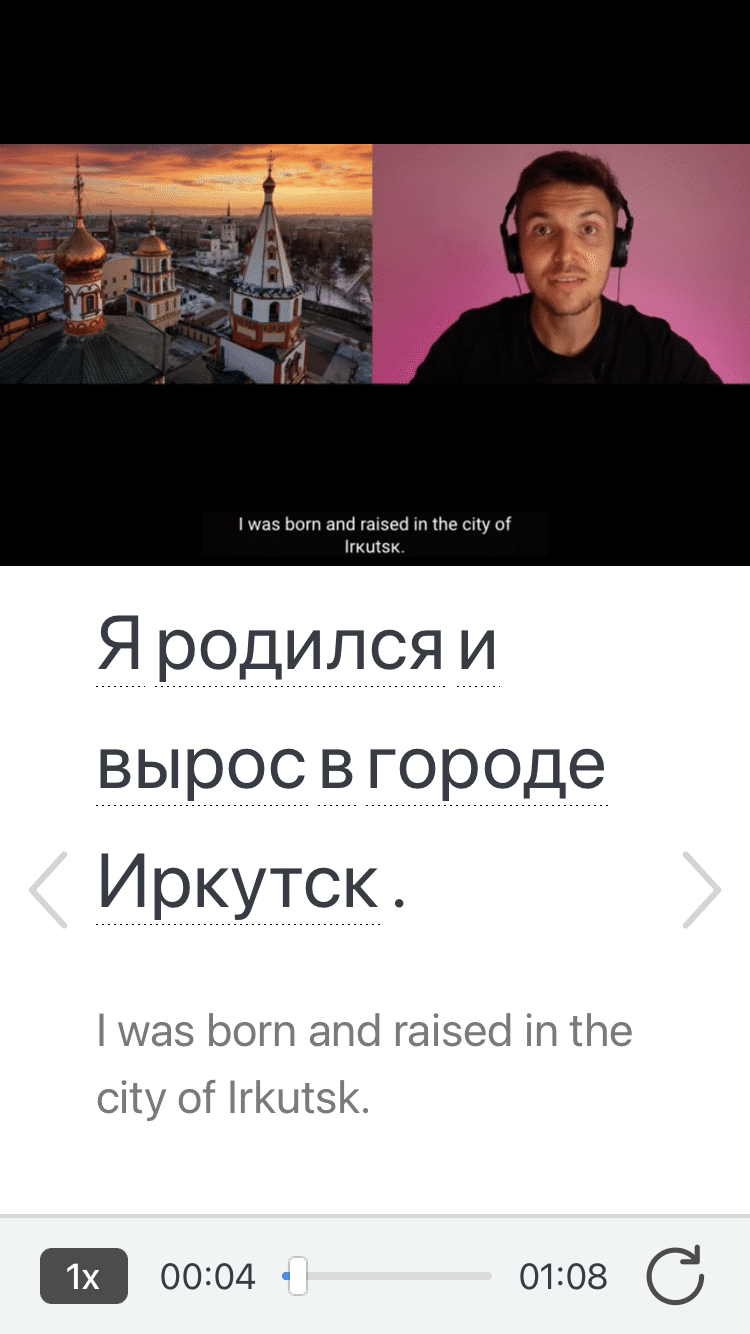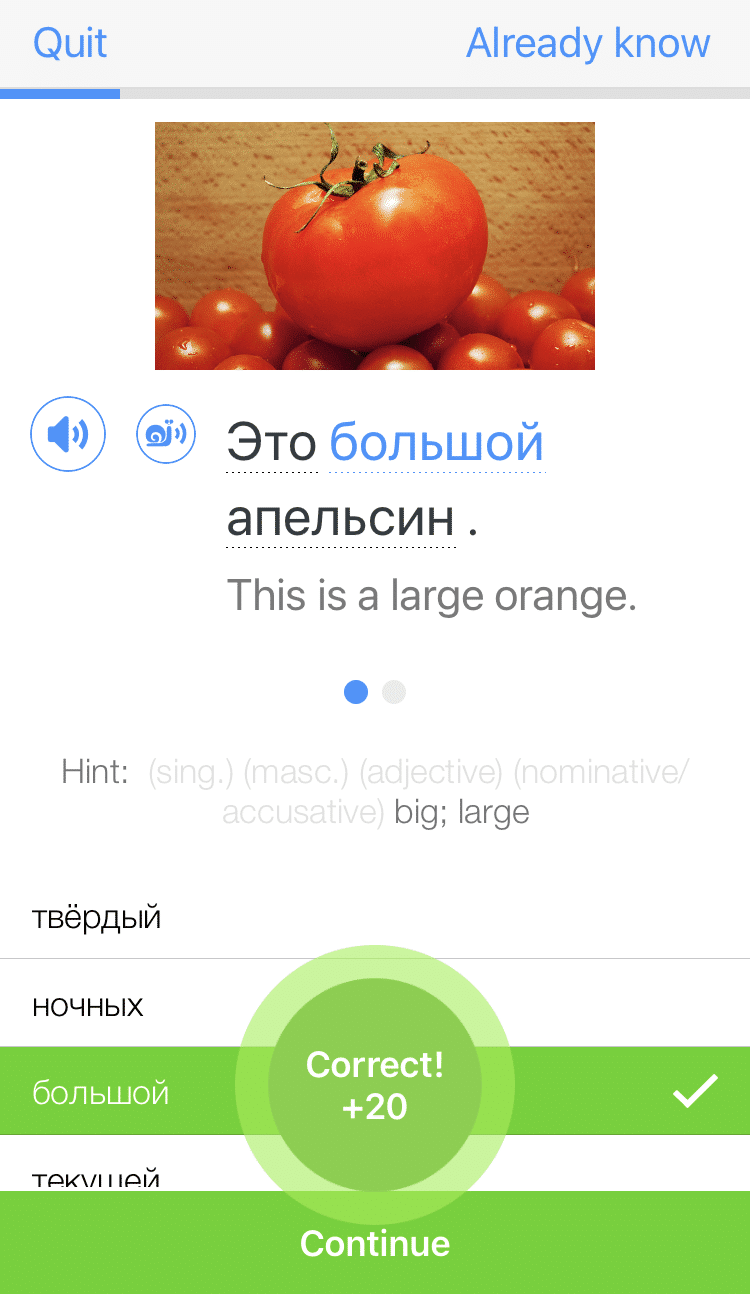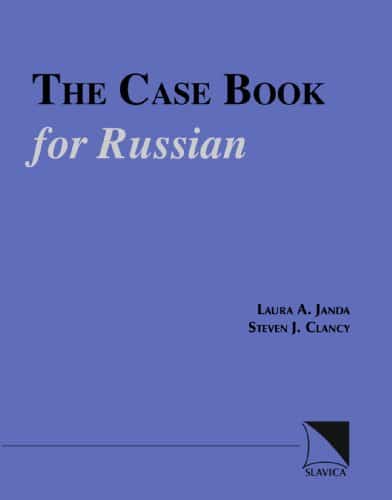
Russian Declension: Grammar Rules and Resources
склонение (declension) is typical in many European languages, especially Russian. It’s a linguistic practice where nouns, pronouns, articles and adjectives are inflected or modified based on gender, number and/or case.
Below, we’ll give you the basics of different Russian declension forms, along with some examples.
The resources that follow include comprehensive word change lists and charts you can use to correctly inflect any Russian noun.
Contents
- What is Declension?
- When Is Russian Declension Used?
- How to Learn Russian Declension
- And One More Thing...
Download: This blog post is available as a convenient and portable PDF that you can take anywhere. Click here to get a copy. (Download)
What is Declension?
Declension is relatively easy and straightforward in modern English, where nouns are only inflected based on their number (singular or plural) and whether it’s in the plain or possessive form. For example, the only variations of the word cat would be cats, cat’s and cats.’
On the other hand, things are a bit more complicated in Russian. At its most basic, Russian declension changes the way the endings of words are spelled. The ending will indicate grammatical case, gender and whether a given word is singular or plural.
There are many overlapping rules for how these changes work. Memorizing them is a difficult undertaking, but doing so is important to your Russian fluency.
When Is Russian Declension Used?
Declension for Grammatical Case
Grammatical case refers to a word’s function in a sentence. In Russian, case can be determined by whether a word is a direct or indirect object or whether something belongs to someone or something else, for example.
Below are the six grammatical cases in Russian, which determine the last one or two letters of a noun. Each case form clearly shows the function of the noun in a given sentence. We’ll discuss each one and its impact on declension below.
Nominative Case
The nominative case dictates that the noun is the main subject of the verb in the sentence. This noun answers the question of “who” or “what” did the action. The ending isn’t changed at all.
Examples of nominative cases of nouns are:
In the remaining five cases below, you’ll see how the above nouns will change endings.
Genitive Case
The genitive case indicates possession and implies that something belongs or refers to someone or something else.
For example:
лодкa мальчика (the boy’s boat)
Notice how we change the ending of the word “boy” from мальчик to мальчика . This indicates that the boat belongs to the boy. For sentences in this case, the owner of the object usually follows the object owned.
Dative Case
Nouns used in the dative case signal that they’re the indirect objects of the verb, signifying that something is given or addressed to the object.
Let’s take this sentence:
папа дал лодку мальчику. (The dad gave a boat to the boy.)
Here, we would change the ending of the word “boy” from к to ку.
Accusative Case
The accusative case indicates that the noun is the direct object of the action. This can easily be confused with the nominative case, but there’s a clear difference.
For example:
мальчик взял лодку. (The boy took the boat.)
In this case, the boy is the subject of the verb, while the boat is the object of the verb. Therefore, the ending of the word “boat” is changed from лодка to лодкy.
Although word order isn’t always an indicator of cases in Russian, the direct object is typically placed after the verb and focuses on the noun to which a certain action happens—in this case, the boat.
Instrumental Case
The instrumental case shows that an instrument was used as a means to carry out an action. Think of English sentences where we use “with,” like “cut the butter with a knife.”
However, in Russian, the instrumental case is typically used with the preposition с (with), and there may not be a physical instrument involved at all, like in:
мальчик играет с другом. (The boy is playing with a friend.)
Prepositional Case
The prepositional case designates an object, person or place that may be the subject of a speech or thought. The preposition о (about) is always used with the prepositional case. The prepositions в and на can be used in this case as well, but watch out: you may also see them in the accusative.
Here are some examples of the prepositional case with each of these three prepositions:
| Preposition | Example Sentence | English Translation |
|---|---|---|
| о (about) | она думает о коробке. | She's thinking about a box. |
| в (in) | она сидит в коробке. | She's sitting in the box. |
| на (on) | она сидит на коробке. | She's sitting on the box. |
Declension for Grammatical Gender
This is where things get especially tricky for native English speakers. Since Russian nouns are gendered, their inflection in different grammatical Russian cases will also depend on their gender, as you’ll see below.
First Declension
First declension nouns consist mostly of feminine nouns as well as masculine nouns that end in a or я . Examples of these words are:
| Russian First Declension Nouns | English Translation |
|---|---|
| мама | mom |
| девочка | girl |
| папа | dad |
| дядя | uncle |
Here are examples of first declension changes for the noun мама (mom) and an я-ending word, буря (storm):
| Grammatical Case | мама (mom) | буря (storm) |
|---|---|---|
| Nominative | мама | буря |
| Genitive | мамы | бури |
| Dative | маме | буре |
| Accusative | маму | бурю |
| Instrumental | мамой | бурей |
| Prepositional | маме | буре |
Second Declension
Second declension nouns include masculine words with zero endings and neuter words that end in e or o . Examples (with second declension changes) include:
| Grammatical Case | cтул (chair) | зеркало (mirror) | брат (brother) |
|---|---|---|---|
| Nominative | стул | зеркало | брат |
| Genitive | стула | зеркала | брата |
| Dative | стулу | зеркалу | брату |
| Accusative | стул | зеркало | брата |
| Instrumental | стулом | зеркалом | братом |
| Prepositional | стуле | зеркале | брате |
In the case of neuter words, the endings would be the same. However, if a masculine word is a living being, the accusative form becomes different, as with the word брат or “brother” (see above).
Third Declension
Third declension words include feminine words with a zero ending—such as ночь (night), which changes in the following ways:
| Grammatical Case | ночь (night) |
|---|---|
| Nominative | ночь |
| Genitive | ночи |
| Dative | ночи |
| Accusative | ночь |
| Instrumental | ночью |
| Prepositional | ночи |
Declension for Numbers
As mentioned, Russian declension also changes word endings based on whether the word is singular or plural. There are different endings depending on whether there’s just one, two to four or five (and above) of what you’re talking about.
To make things even more interesting (or maddening, as it were), the numbers “one” and “two” also inflect based on gender. You’ll see different spellings for these words in the examples below.
Once again, it’s important to remember that these are non-exhaustive examples. Spelling changes for any specific word will depend on its gender and how it’s being used in the sentence. You may also need to brush up on your Russian numbers.
To translate each phrase below, check the row and corresponding column. For example, since один мужчина is in the row “one” and under the column “man,” the phrase therefore means “one man.” два мужчины would be “two men,” три мужчины would be “three men” and so on and so forth.
| Russian Numbers | мужчина (man) | женщина (woman) |
|---|---|---|
| один (one) | один мужчина | одна женщина |
| два (two) | два мужчины | две женщины |
| три (three) | три мужчины | три женщины |
| четыре (four) | четыре мужчины | четыре женщины |
| пять (five) | пять мужчин | пять женщин |
| шесть (six) | шесть мужчин | шесть женщин |
| семь (seven) | семь мужчин | семь женщин |
| восемь (eight) | восемь мужчин | восемь женщин |
| девять (nine) | девять мужчин | девять женщин |
| десять (ten) | десять мужчин | десять женщин |
Here’s a full rundown on the declension of cardinal numbers for gender and case from Arizona State University.
How to Learn Russian Declension
Now that you’ve learned the parameters for Russian declension, it’s time to memorize those nitty-gritty word changes. Fortunately, there are resources available to Russian learners that make it a (mostly) painless experience.
Here are some of our favorites:
Multitran Online Inflection Identifier
Got a specific word you need to inflect? Just enter it into the search bar of this super easy-to-use tool, and it’ll show you the word changes depending on case and plurality.
You can even enter search words in English, and get a Russian translation and declension guide. And if you happen to use other languages like Hungarian, Polish, German, French, Spanish, Italian, Chinese, Latvian and Dutch, this site has you covered, too.
Cooljugator
Want to instantly declinate Russian nouns—complete with singular and plural forms in each of the grammatical cases plus example sentences with English translations?
If that all sounds too good to be true, you’re going to be surprised at what Cooljugator can do. Currently, the site claims it can declinate around 80,000 nouns in Russian. That may not cover every noun in the language, but it’s still a lot whether you’re a learner or even a native speaker.
FluentU
If you’re feeling a bit overwhelmed by the number of word changes to remember, you’re in luck. With FluentU, you can learn Russian grammar naturally through an immersive environment with plenty of useful tools to support your learning.
Choose from hundreds of short video clips from authentic Russian media—movies, TV shows, music videos and more—and see declension in action. With a downloadable transcript and interactive subtitles (in Russian and English), each video becomes a mini-language lesson that won’t overwhelm or bore you.
“The Case Book for Russian”
This book organizes the six Russian cases into specific chapters.
There are handy tables that provide references to word endings for cases, as well as examples to see how the words are used in actual sentences. Better yet, these example sentences are pulled from authentic Russian prose found in fiction, newspapers and other sources.
The book also features exercises and a CD that allows listeners to hear a native Russian speaker pronounce the words.
“Russian Cases: Made Simple”
This book may simplify the Russian cases as its title suggests, but it gives you a rock-solid foundation to navigate the fiddlier bits of the language.
Aside from discussing the theories behind each case, it also provides loads of examples, instructions and exercises to help you strengthen your grasp on this tricky but essential grammatical concept.
The book even discusses cases that you may not have heard of, so this book goes far beyond its promise to make cases simple by giving you something solid to chew on in your journey to fluency.
In case the exercises from this book aren’t enough, you can always buy other Russian textbooks for added practice.
Russian declension isn’t easy, but it’s certainly not impossible to learn. Utilize the rules in this article plus the additional resources to start this process.
If you stumble, don’t give up! You’re not only learning a new language, but you’re also learning new Russian grammar rules that aren’t found in your native tongue, which is challenging. Just think of how gratifying it’ll be once you’ve perfected the Russian cases.
Download: This blog post is available as a convenient and portable PDF that you can take anywhere. Click here to get a copy. (Download)
If you love learning Russian and want to immerse yourself with authentic materials from Russia, then I should also tell you more about FluentU.
FluentU naturally and gradually eases you into learning the Russian language and culture. You'll learn real Russian as it's spoken by real Russian people!
FluentU has a very broad range of contemporary videos. Just a quick look will give you an idea of the variety of Russian-language content available on FluentU:
FluentU makes these native Russian videos approachable through interactive transcripts. Tap on any word to look it up instantly.
Access a complete interactive transcript of every video under the Dialogue tab. Easily review words and phrases with audio under Vocab.
All definitions have multiple examples, and they're written for Russian learners like you. Tap to add words you'd like to review to a vocab list.
And FluentU has a learn mode which turns every video into a language learning lesson. You can always swipe left or right to see more examples.
The best part? FluentU keeps track of your vocabulary, and gives you extra practice with difficult words. It'll even remind you when it’s time to review what you’ve learned. You'll have a 100% personalized experience.
Start using the FluentU website on your computer or tablet or, better yet, download the FluentU app from the iTunes or Google Play store. Click here to take advantage of our current sale! (Expires at the end of this month.)
And One More Thing...











